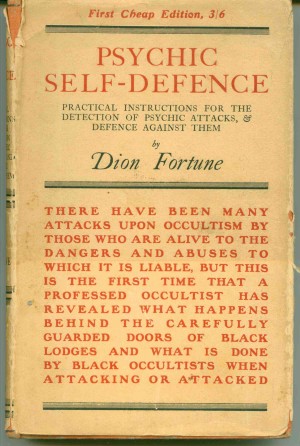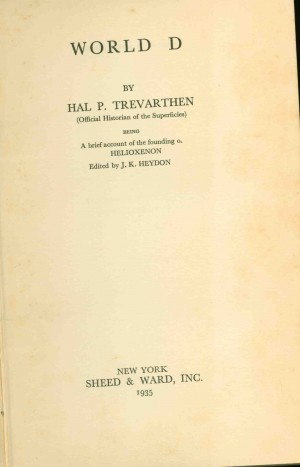Psychology
Sensation Seeking Scale
The Sensation Seeking Scale was developed by Prof. Marvin Zuckerman almost forty years ago. It measures four psychological tendencies: thrill and adventure seeking; experience seeking; disinhibition; and susceptibility to boredom.Take the test over at the BBC to find out how much (and what kind) of a sensation seeker you are.
I scored very high as an "experience seeker." Makes sense for someone who's addicted to weird.
Posted By: Alex - Mon Dec 15, 2008 -
Comments (5)
Category: Quizzes, Psychology
Self-Embedding Disorder
Teenagers have discovered a new method of screwing themselves up. Cutting and poisoning themselves is no longer enough. The new fad is to deliberately embed objects in their flesh. Doctors report that they've removed a variety of embedded objects from the arms, hands, feet, ankles and necks of teenage girls. These objects include: needles, staples, wood, stone, glass, pencil lead, crayon, and an unfolded metal paper clip more than 6 inches long.Goes without saying that the teenagers doing this have a lot of mental health issues. Link: Chicago Tribune
(I'm pretty sure someone forwarded us this link, but I can't remember who it was. Thank you, whoever you are!)
Posted By: Alex - Wed Dec 10, 2008 -
Comments (4)
Category: Medicine, Psychology
The Hard-To-Get Woman
Why do women play hard to get? According to research recently conducted at the University of Bristol, it's so that "men can prove themselves more worthy than their rivals."Here's how it works. The woman acts coy. The man acts eager and helpful. Eventually the woman decides, "I am going to have a child with this male." I assume she says this in a robotic voice.
The researchers hope their study "could eventually lead to a model that could work out the optimal amount of coyness for a woman to use in choosing a male."
I wrote about some similar research in Elephants on Acid. In 1973 researchers from the University of Wisconsin instructed a Nevada prostitute to play "hard to get," and then studied the reactions of her clients. Hard to get, in that context, meant that she didn't indicate to her clients whether she wanted to see them again. Client response was measured by the number of times the guy returned during the following month. The researchers concluded that men don't like women who play hard to get. Instead men like women who are easy for themselves but hard for everyone else to get. (Thanks, Sandy!)
Posted By: Alex - Tue Dec 09, 2008 -
Comments (7)
Category: Science, Experiments, Psychology, Women
Adult Footed Pajamas
At the Jumpin Jammerz site, you can find dozens of models. Here's a handy Amazon link for just one, if you really must!
Posted By: Paul - Wed Oct 15, 2008 -
Comments (10)
Category: Fashion, Psychology, Infantilism, Fetishes, Babies and Toddlers
The Glass Delusion
An unusual psychiatric disorder swept through Europe during the late Medieval period. Many people came to believe they were made of glass "and therefore likely to shatter into pieces." Historians call this the Glass Delusion.A typical sufferer might have believed he was "a urinal, an oil lamp or other glass receptacle, or else he might himself be trapped within a glass bottle." (A "urinal" during the middle ages referred to a small flask... essentially a glass pee pee bottle.)
One famous early sufferer: the French king, Charles VI, who refused to allow people to touch him, and wore reinforced clothing to protect himself.
A 1561 medical account describes a patient "who had to relieve himself standing up, fearing that if he sat down his buttocks would shatter... The man concerned was a glass-maker from the Parisian suburb of Saint Germain, who constantly applied a small cushion to his buttocks, even when standing. He was cured of this obsession by a severe thrashing from the doctor, who told him that his pain emanated from buttocks of flesh."
In modern times, the glass delusion has disappeared. "Surveys of modern psychiatric institutions have only revealed two specific (uncorroborated) cases of the glass delusion. Foulché-Delbosc reports finding one Glass Man in a Paris asylum, and a woman who thought she was a potsherd was recorded at an asylum in Meerenberg."
One sign of the glass delusion's vanishing is that there's not much information about it on the internet. Not even a wikipedia entry about it. The above factoids came from "An odd kind of melancholy: reflections on the glass delusion in Europe," by Gill Speak, published in 1990 in the History of Psychiatry.
Posted By: Alex - Thu Oct 09, 2008 -
Comments (5)
Category: History, Psychology
Tongue Jutting
 The FiveThirtyEight blog noted the frequency with which McCain stuck out his tongue during last Friday's debate. The behavior is known as "tongue jutting." It's a well-known "tell" that professional interrogators and poker players look for. According to retired FBI agent Joe Navarro, this is what it means:
The FiveThirtyEight blog noted the frequency with which McCain stuck out his tongue during last Friday's debate. The behavior is known as "tongue jutting." It's a well-known "tell" that professional interrogators and poker players look for. According to retired FBI agent Joe Navarro, this is what it means:I'll add that tongue jutting (or tongue protrusion) is also a behavior often seen in the animal world. Reptologists have developed the "tongue flick attack score" which is "a common method for quantifying predatory behavior in squamate reptiles." A higher score (i.e. more tongue flicks) indicates a greater predatory response.
Tongue protrusion is also a form of sociosexual behavior that has been observed in nocturnal Owl Monkeys. It is part of a range of mating behavior that includes lip-smacking, squinting, partner-marking, and urine-drinking.
So the question is, was McCain's tongue jutting more reptilian or primate? i.e. was it more predatory in nature, or sociosexual? I'll leave that to you readers to decide.
Posted By: Alex - Wed Oct 01, 2008 -
Comments (2)
Category: Animals, Psychology
Dion Fortune
Collecting novels of the fantastic as I do, I eventually and inevitably came across those of Dion Fortune, and bought a few. To this day, they remain untracked by my eyes. Nonetheless, I was sensitized to her name, and could spot her non-fiction selection Psychic Self-Defence readily on the shelf of a used-book store and snatch it up. A bargain at $5.00, I'm sure!I haven't read it yet, but I'm much looking forward to learning how to protect myself against various types of intrusive mind assaults. Sample a few pages yourselves below.
And thanks to Google Books, you can read the whole thing online here.


Posted By: Paul - Fri Sep 26, 2008 -
Comments (8)
Category: New Age, Paranormal, Self-help Schemes, Psychology, Books, 1930s
World D
Here's another strange book I purchased but have not yet read. The real author is Joseph K. Heydon, using the pen-name of Hal Trevarthen. Time has swallowed up all details related to Heydon and his book, leaving us only with the text itself.Here's the description from the amazingly ugly dustjacket.
Here's the title page, followed by a sample of the actual bafflegab inside.
 Posted By: Paul - Thu Sep 11, 2008 -
Comments (11)
Posted By: Paul - Thu Sep 11, 2008 -
Comments (11) Category: Aliens, Eccentrics, Government, Inventions, Literature, Books, Science Fiction, Writers, Nature, New Age, Paranormal, Pop Culture, Science, Psychology, Self-help Schemes, Foreign Customs, 1930s, Yesterday’s Tomorrows
One Touch of Homer Makes the Whole World Kin

After briefly distracting the patients, the researchers then asked them to think about the clips for a minute and to report “what comes to mind.” The patients remembered almost all of the clips. And when they recalled a specific one — say, a clip of Homer Simpson — the same cells that had been active during the Homer clip reignited. In fact, the cells became active a second or two before people were conscious of the memory, which signaled to researchers the memory to come.
Why is Homer Simpson singled out as the test case? Obviously because the human brain has specific neurons that emulate or actually induce and compel Homer-Simpson-style behavior.
And there in a nutshell you have the whole basis for ninety-nine percent of the contents of WEIRD UNIVERSE.
Posted By: Paul - Fri Sep 05, 2008 -
Comments (13)
Category: Celebrities, Science, Experiments, Psychology, Stupidity, Television, Husbands, Cartoons
Candid Camera
Candid Camera was, in my opinion, the greatest TV show about psychology ever made, and this is one of its classic segments: Group behavior in elevator. It speaks volumes about the human need to conform.Another segment I like is "The Interpreter," from the British Candid Camera. Watch as the interpreter never questions the romantic advances the woman makes toward him, even though her "fiancee" is sitting beside him.
Posted By: Alex - Thu Sep 04, 2008 -
Comments (1)
Category: Television, Video, Psychology

| Who We Are |
|---|
| Alex Boese Alex is the creator and curator of the Museum of Hoaxes. He's also the author of various weird, non-fiction, science-themed books such as Elephants on Acid and Psychedelic Apes. Paul Di Filippo Paul has been paid to put weird ideas into fictional form for over thirty years, in his career as a noted science fiction writer. He has recently begun blogging on many curious topics with three fellow writers at The Inferior 4+1. Contact Us |









